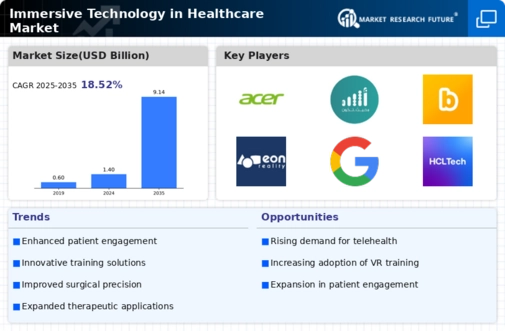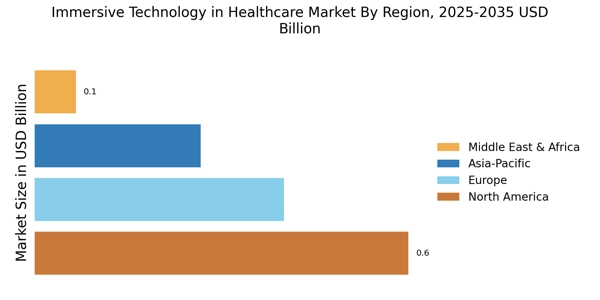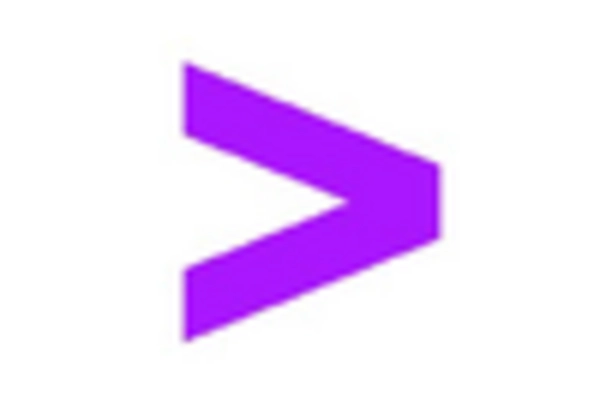Leading market players are investing heavily in research and development in order to expand their product lines, which will help the Immersive Technology in Healthcare Market, grow even more. Market participants are also undertaking a variety of strategic activities to expand their footprint, with important market developments including new product launches, contractual agreements, mergers and acquisitions, higher investments, and collaboration with other organizations. To expand and survive in a more competitive and rising market climate, Immersive Technology in Healthcare industry must offer cost-effective items.
Manufacturing locally to minimize operational costs is one of the key business tactics used by manufacturers in the Immersive Technology in Healthcare industry to benefit clients and increase the market sector. In recent years, the Immersive Technology in Healthcare industry has offered some of the most significant advantages to medicine.
Major players in the Immersive Technology in Healthcare Market, including Acer Inc., Atheer, Inc., AVEVA Group PLC, Barco NV, Blippar Ltd., Carl Zeiss AG, CM Labs Simulations Inc., EON Reality, Inc., FAAC Incorporated, Google, LLC, HCL Technologies Limited, Honeywell International, Inc., HTC Corporation, Immersive Media Company, Immersive Technologies Pty Limited, Lockheed Martin Corporation, Magic Leap, Inc., NCTech Limited, Oculus (Facebook Technologies, LLC.), Samsung Group, Sony Corporation, Unity Software Inc., Varjo Technologies Oy, VI-grade GmbH, Zeality Inc. and others, are attempting to increase market demand by investing in research and development operations.
A technological business called Unity Software Inc. (Unity Technologies) creates software platforms. The business offers the (RT3D) development platform, which gives programmers the means to make complex, interactive 2D, 3D, VR, and AR experiences. The product lines offered by Unity Technologies include, among others, Unity Plus, Unity Enterprise, Unity MARS, Unity Build Server, Pixyz, Optimization Accelerator, and multiplayer games. In addition, the business offers RT3D in a variety of industries, including architecture, games, movies, and engineering and construction. San Francisco, California, in the United States, serves as the home base for Unity Technologies.
Sony Group Corp. (Sony) manufactures a variety of products, including devices, tools, medical equipment, semiconductors, and electronics. The company's products include batteries, software, televisions, cell phones, cameras, music systems, game consoles, and other electrical equipment. Sony produces, buys, and distributes motion films, television programs, and recorded music in addition to operating television and digital networks. Through distributors, sales divisions, and online direct sales, the company promotes its products. Under the names Airpeak, Sony, PlayStation, Walkman, Blu-ray, Cyber-shot, Bravia, Exmor, and Experia, it offers products for sale.
Africa, the Middle East, Asia-Pacific, and the Americas are all where the company has activities. Sony's corporate headquarters are in Minato-Ku, Tokyo, Japan.


















Leave a Comment